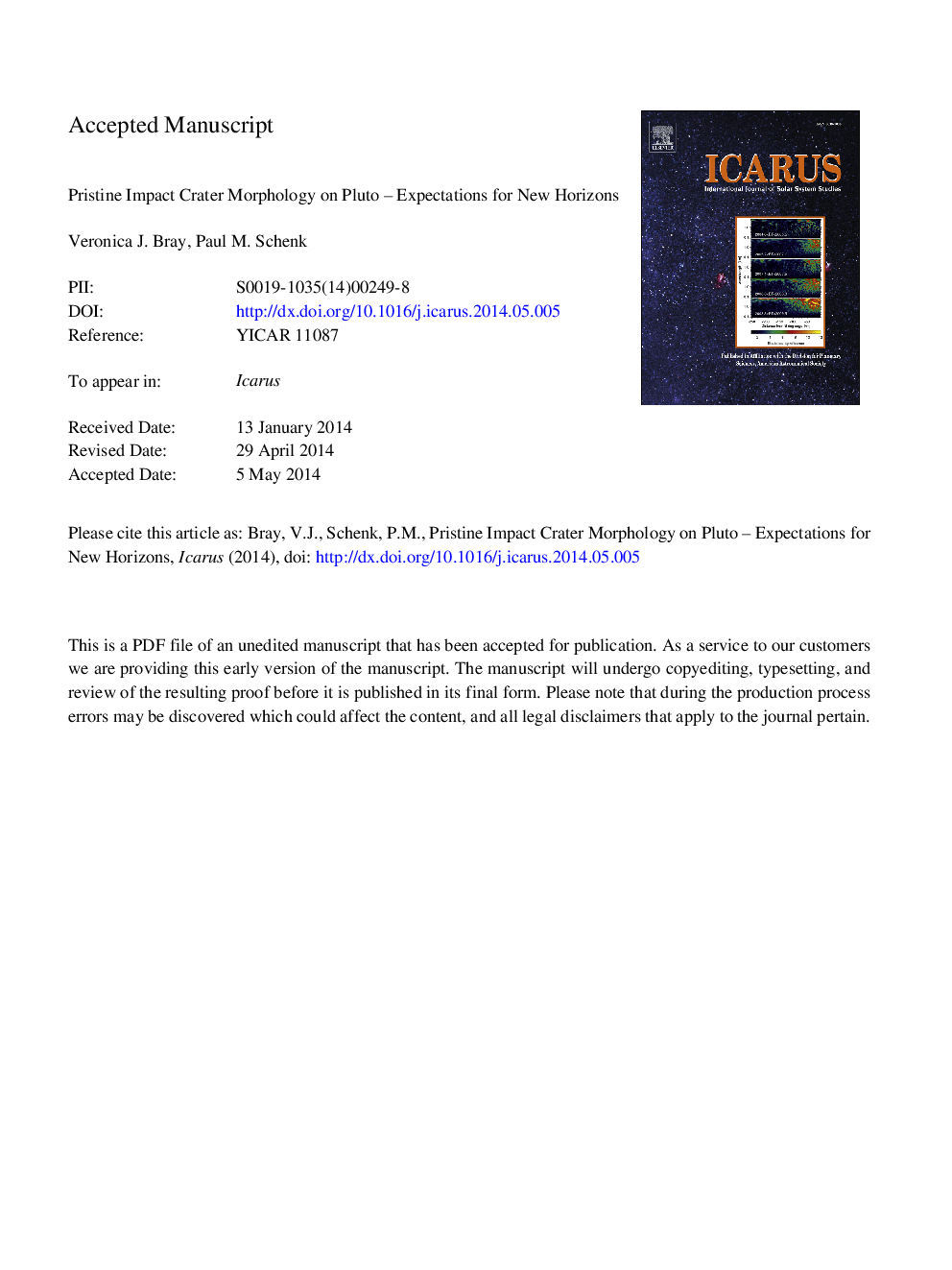| Article ID | Journal | Published Year | Pages | File Type |
|---|---|---|---|---|
| 8137196 | Icarus | 2015 | 44 Pages |
Abstract
This paper combines previous cratering studies and numerical modeling of the impact process at different impact velocities to predict crater morphology on Pluto. As an icy body, Pluto's craters are expected to be similar in morphology to those on the icy satellites: lesser depth-diameter ratios (d/D), shallower wall slopes and the development of central uplifts in craters of smaller rim-to-rim diameter than craters on rocky bodies of similar gravity. The low impact velocity of the Pluto system (â¼2 km sâ1) might cause deviation from this generalization as the simulations presented in this work suggest that decreasing impact velocity from 10 km sâ1 to 2 km sâ1 results in deeper craters (larger d/D) and a simple-to-complex transition diameter at larger crater sizes than predicted based on gravity scaling alone (D > 6 km). Conversely, decreasing impact velocity from 2 km sâ1 to 300 m sâ1 produced smaller d/D, akin to the lower d/D noted for secondary craters. This complex relationship between impact velocity and d/D suggests that there might be a larger range of 'pristine' simple crater depths on Pluto than on bodies with higher mean impact velocity. The low impact velocities and correspondingly low volumes of impact melt generated at Pluto might prevent the occurrence, or limit the size, of floor-pits if their formation involves impact melt water. The presence, or not, of central floor-pit craters on Pluto will thus provide a valuable test of floor-pit formation theories. The presence of summit-pits or concentric craters on Pluto is plausible and would indicate the presence of layering in the near sub-surface. Palimpsests, multi-ring basins and other crater morphologies associated with high heat flow are not expected and would have important implications for Pluto's thermal history if observed by New Horizons.
Keywords
Related Topics
Physical Sciences and Engineering
Earth and Planetary Sciences
Space and Planetary Science
Authors
Veronica J. Bray, Paul M. Schenk,
